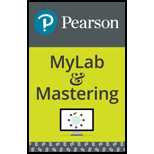
Concept explainers
(a)
Interpretation:
Whether the phenomenon of zinc metal producing a colorless gas in acid is a physical or a chemical change is to be stated.
Concept introduction:
The phenomenon in which matter is rearranged without losing its identity is called a physical change. The phenomenon in which matter changes its form and loses its identity is called a chemical change. A chemical change results from a
(b)
Interpretation:
Whether the phenomenon in which nickel alloys with copper in a
Concept introduction:
The phenomenon in which matter is rearranged without losing its identity is called a physical change. The phenomenon in which matter changes its form and loses its identity is called a chemical change. A chemical change results from a chemical reaction, while a physical change results when matter changes forms but not its chemical identity.
(c)
Interpretation:
Whether the phenomenon of boiling of liquid helium at
Concept introduction:
The phenomenon in which matter is rearranged without losing its identity is called a physical change. The phenomenon in which matter changes its form and loses its identity is called a chemical change. A chemical change results from a chemical reaction, while a physical change results when matter changes forms, but not its chemical identity.
(d)
Interpretation:
Whether the phenomenon of sodium metal reacting with chlorine gas is a physical or a chemical change is to be stated.
Concept introduction:
The phenomenon in which matter is rearranged without losing its identity is called a physical change. The phenomenon in which matter changes its form and loses its identity is called a chemical change. A chemical change results from a chemical reaction, while a physical change results when matter changes forms, but not its chemical identity.
Want to see the full answer?
Check out a sample textbook solution
Chapter 3 Solutions
EP INTRODUCTORY CHEM.-MOD.MASTERINGCHEM
- You are given 8.16 g of an unknown mixture of ethane gas and oxygen gas. You burn the unknown mixture in a sealed container and recover 0.788 g of water and also recover some carbon dioxide and ethane gas. (v) What was the mass of oxygen gas in the unknown mixture? (w) What was the mass of ethane gas in the unknown mixture? (x) What was the mass percent of oxygen gas in the unknown mixture?arrow_forward5 Water is evaporated from the magnesium chloride solution. The resulting solid is melted at 700°C and decomposed by passing electric current through it. (a) What is the name of the physical change that occurs first in the magnesium chloride? (b) Write the balanced chemical equation for this step. (c) Identify the type of chemical reaction.arrow_forwardQ. 1) Complete and balanced the following chemical equations. ASsume complete reaction and indicate physical states. (а) NH2OH (aq) + H2SeO4 (aq) → (b) 2 N2 (g) + 5_ 02 (g) → 2 (g) + 2 H2O (1)|→ (c) (CH3):ССH(CO-H)2 (s) + O2 (g) → (d) НЗASO4 (aq) + Sr(OH)2 (aq) →arrow_forward
- 3. The radius of an atom of gold (Au) is about 1.35 A°. (a) Express this distance in nanometers (nm) and in picometers (pm). (b) How many gold atoms would have to be lined up to span 1.0 mm? (c) If the atom is assumed to be a sphere, what is the volume in cm3 of a single Au atom? (Note: unit A is angstrom).arrow_forwardWhich of the following is best characterized as a heterogeneous mixture? Group of answer choices (a) Air (b) Sandy Dirt (c) An aqueous solution of NaCl (d) Electrum (an alloy of gold and silver) (e) Clear Diamondarrow_forwardWhich molecules are enantiomers? Which molecules are the same? (A). H Brarrow_forward
- A liquid compound containing only hydrogen and oxygenis placed in a flask. Two electrodes are dipped into theliquid and an electric current is passed between them.Gaseous hydrogen forms at one electrode and gaseousoxygen at the other. After a time, 14.4 mL hydrogen hasevolved at the negative terminal, and 14.4 mL oxygen hasevolved at the positive terminal.(a) Assign a chemical formula to the compound in thecell.(b) Explain why more than one formula is possible as theanswer to part (a).arrow_forwardClassify the solid state of the following substances as ionic crystals, covalent crystals, molecular crystals, or metallic crystals:arrow_forwardSelect the best answer or answers from the choices given: Which of the following does not describe a mixture? (a) properties of its components are retained, (b) chemical bonds are formed, (c) components can be separated physically, (d) includes both heterogeneous and homogeneous examples.arrow_forward
- The diagram on the left represents the result of a process. Which of the diagrams [(i) to (iii)]could represent the starting material if the process were physical, and which could represent the starting material if the change were chemical?arrow_forward(a) What is the volume (in km³) of Avogadro's number of sand grains if each grain is a cube and has sides that are 1.6 mm long? 2470000 ✔ km³ (b) How many kilometers of beaches in length would this cover if the beach averages 123 m in width and 12.1 m in depth? Neglect air spaces between grains. 1840 kmarrow_forwardWhich of the following is a chemical change? Explain your reasoning: (a) boiling canned soup; (b) toasting a slice of bread; (c) chopping a log; (d) burning a log.arrow_forward
 ChemistryChemistryISBN:9781305957404Author:Steven S. Zumdahl, Susan A. Zumdahl, Donald J. DeCostePublisher:Cengage Learning
ChemistryChemistryISBN:9781305957404Author:Steven S. Zumdahl, Susan A. Zumdahl, Donald J. DeCostePublisher:Cengage Learning ChemistryChemistryISBN:9781259911156Author:Raymond Chang Dr., Jason Overby ProfessorPublisher:McGraw-Hill Education
ChemistryChemistryISBN:9781259911156Author:Raymond Chang Dr., Jason Overby ProfessorPublisher:McGraw-Hill Education Principles of Instrumental AnalysisChemistryISBN:9781305577213Author:Douglas A. Skoog, F. James Holler, Stanley R. CrouchPublisher:Cengage Learning
Principles of Instrumental AnalysisChemistryISBN:9781305577213Author:Douglas A. Skoog, F. James Holler, Stanley R. CrouchPublisher:Cengage Learning Organic ChemistryChemistryISBN:9780078021558Author:Janice Gorzynski Smith Dr.Publisher:McGraw-Hill Education
Organic ChemistryChemistryISBN:9780078021558Author:Janice Gorzynski Smith Dr.Publisher:McGraw-Hill Education Chemistry: Principles and ReactionsChemistryISBN:9781305079373Author:William L. Masterton, Cecile N. HurleyPublisher:Cengage Learning
Chemistry: Principles and ReactionsChemistryISBN:9781305079373Author:William L. Masterton, Cecile N. HurleyPublisher:Cengage Learning Elementary Principles of Chemical Processes, Bind...ChemistryISBN:9781118431221Author:Richard M. Felder, Ronald W. Rousseau, Lisa G. BullardPublisher:WILEY
Elementary Principles of Chemical Processes, Bind...ChemistryISBN:9781118431221Author:Richard M. Felder, Ronald W. Rousseau, Lisa G. BullardPublisher:WILEY





